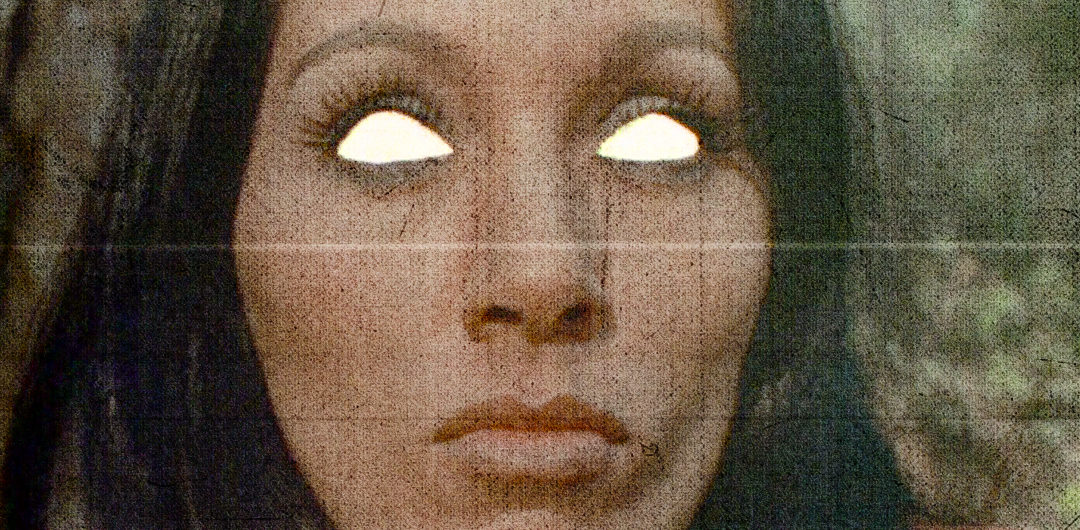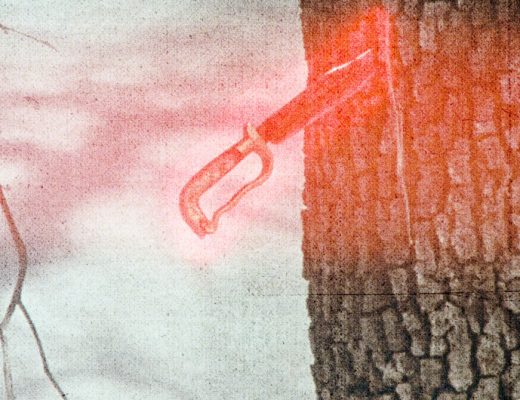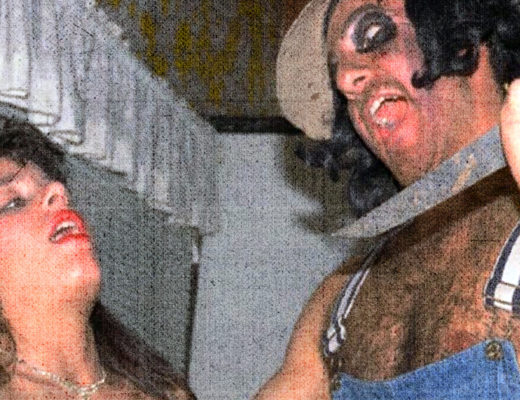Do you remember your first real kiss? The awkward, embarrassing liplock, followed by a joy of discovery, and then an instant yearning. It’s a pleasant feeling that fades into nothingness as the years (and mind) wear on. Kind of like the films of Jack Weis.
In 1976, legendary director/huckster Donn Davison made a deal with small time New Orleans film distributor Jack Weis. Weis had released a voodoo-tinged, PG rated exploitation film to stunning heights of failure. Davison, forever on the prowl for a good outlet for his talents, teamed up with Weis, intending to score a hit. The two cut up the film’s footage, rehired an actor or two, and added new scenes. Crypt Of Dark Secrets was the result. Utter flop.
Two years later, Jack Weis was once again behind the French Quarter cameras. Mardi Gras Massacre, a bonafide scum classic (and UK Video Nasty) was born. He would never direct again.
Prostitute: “You aren’t weird are you?”
The Killer: “YES! More different than you have ever known!”
People say that the unknown is more attractive than the known. Others add that what you don’t know won’t hurt you. Maybe they’re both right. Jack Weis’s two-movie strong filmography walks that fine line between utter hilarity and bubbling sleaze in regional American filmmaking. His productions are perfect combinations of the elements that propel only the uppermost crust of the trash film genre — illogical situations, exotic ludicrousness, and graceless, non-artistic filmmaking. Few uncelebrated directors have the power to throw your senses into such an unnatural funk. Strange then, that information behind Weis’s peculiar films, and his subsequent activities for the last thirty years, have become lost to the muck of the swamp.
New Orleans, Louisiana, 1976. A pretty exciting place, fueled by a dingy nightlife of Dixie Beer, gambling joints named The Club Car Lounge, and baked oysters at restaurants like Mosca’s. Although the tragic consequences of Hurricane Katrina will forever alter the perception of the French Quarter, there was a time when romantic notions weren’t just notions. And Playboy Playmates appeared in low budget horror films.
Jack Weis started out as a regional distributor in New Orleans, mostly working with obscure nudies and similarly themed low budget films. He may have had a hand in the production of two extremely obscure southern dramas, Quadroon (1972) and Storyville (1974). However, his real “break” wouldn’t hit until a few years later. When Weis started exposing Kodachrome to light, the drinks were cheap and the nights were lit up high. Enter Damballa.
Ted: “You’re the girl that swims in the lake. The one that turns into a snake.”
Damballa: “YESSS…I’m going to tell you my story. The story of all!”
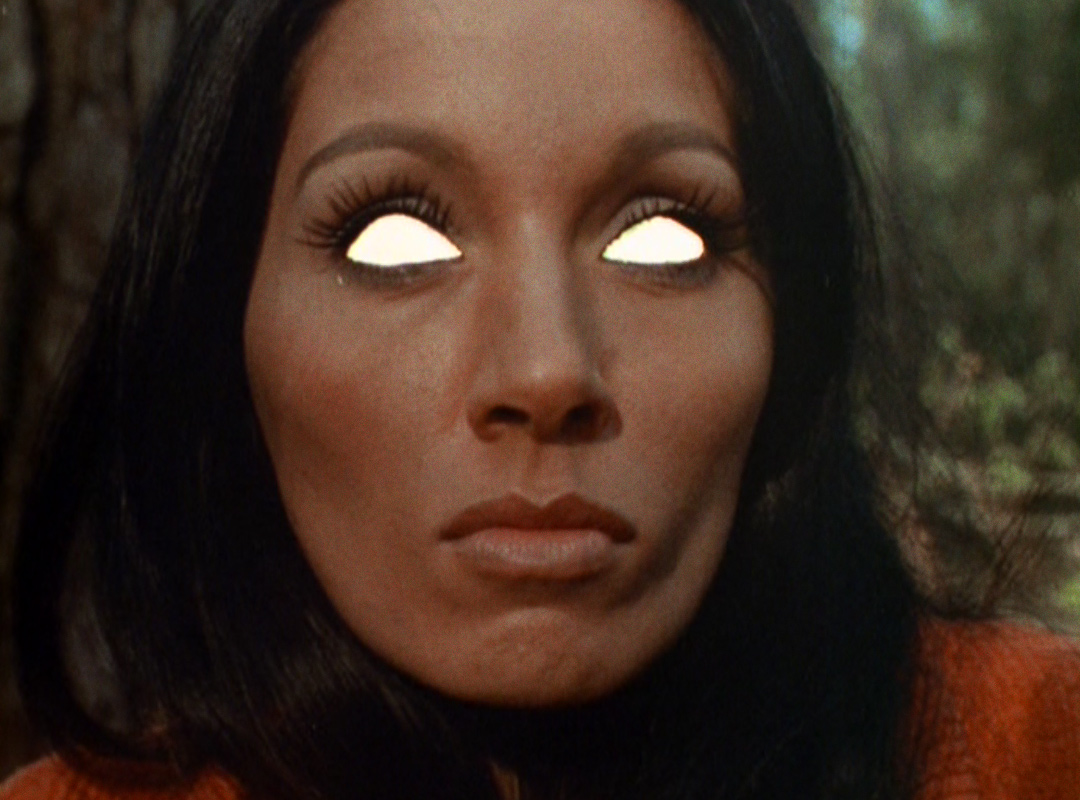
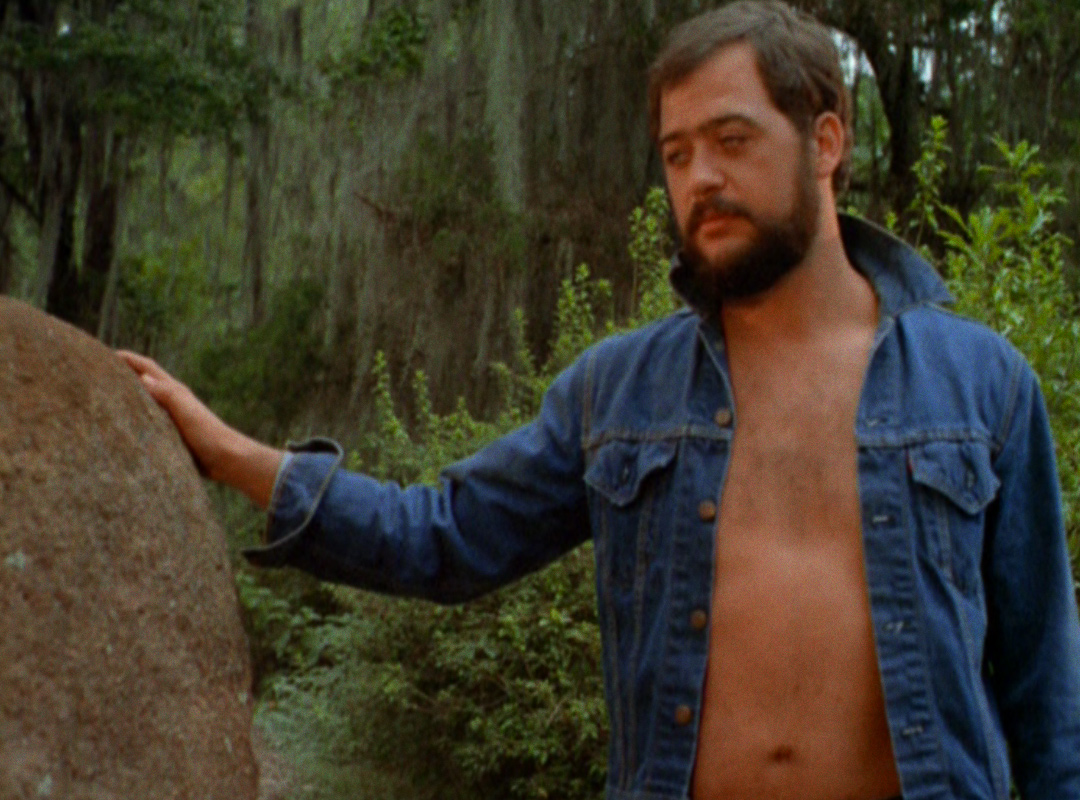
Crypt Of Dark Secrets (1976) follows the life of drowsy Vietnam vet Ted Watkins (Ronald Tanet), as he buys an island (“No other humans for 10 miles!”), deals with robbers, falls in love with the voodoo spirit Damballa (Maureen Ridley), and shows off some astonishing denim fashions. Introduced by a fright-wigged Donn Davison during a tacked-on prologue, Crypt slogs along with vibrant swamp photography and hysterical dramatics. The shots are static, the external noises are booming, and the plot is moot. Did Maureen Ridley learn her lines phonetically AND THEN concede to writhe fully nude on a mummy casket? Was Ronald Tanet drunk, stoned, or just really tired on each day of the shoot? Does a butter knife to the arm actually feel just like a stomach ache? Crack a beer with Sergeant Buck and see if you can get the answers.
Perhaps audiences in the mid-70s weren’t ready to comprehend the dreamy trash comedy of Crypt. The film was destined for complete obscurity, even thought to be lost until Something Weird acquired a beautiful print from Donn Davison himself in the mid 90s. At least the shoot was a good time. Pat Alexander, a close friend of Donn’s, commented that, “Donn conceived the idea of the naked priestess and was responsible for her footage as well. Apparently, everybody on the cast and crew was trying to bed her! The bit where [Damballa] is floating in the air out in the woods, uses the actual magician’s stage apparatus from Donn’s magic show. The levitation apparatus was actually owned by Florida magician, Roy Huston — the same illusion used in the stage & film version of Magic Land of Mother Goose.”
In an interview with the Times-Picayune in March of 2000, Ted Watkins himself, Ronald Tanet, shared his thoughts on the film. “Look, they paid me six grand to make an ass of myself in public and I usually do that for free. If you live long enough, anything you do in your youth can come back to haunt you.” Alexander went on to add, “Nobody made a dime. Drive-Ins were well on their way out, leaving small time distributors like Jack Weiss out in the cold.” So what’s a small time distributor to do? Bring on the nasty.
The Killer: “Hello. I understand that you’re the most evil woman here.”
Angela: “Listen, honey. I could probably take first prize in ANY evil contest.”
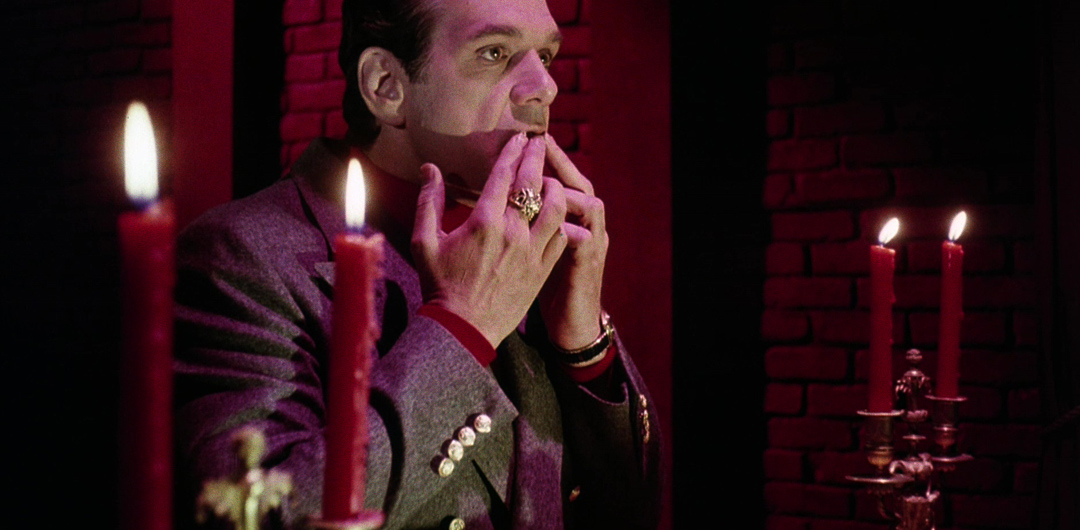

Mardi Gras Massacre (1978) is the disco-soaked story of a man, his rubbing oils, and the fully nude prostitutes and strippers that serve as his gore-strewn sacrifices to an Aztec god. The film has long been considered an homage to H.G. Lewis’s ground breaking Blood Feast (1963). However, Mardi Gras Massacre has little in common with Fuad Ramses, aside from a few surface level elements. Weis’s swan song is on another plain entirely, more in check with Lewis’s later The Gore Gore Girls, both in production values and atmosphere, but minus the intentioned wit. In that context, the flow is clear. The absurd parade of downbeat female exploitation and violence in Mardi Gras Massacre (strip to the pubes, strap to a table, fondle with oils, disembowel, rinse, then repeat) may come across as off-putting; that is, if you can stop laughing long enough to notice.
In the span of 90 minutes, Mardi Gras Massacre weaves a gut-busting epic of illogical, dirt cheap sleaze. All aspects of the film defile the bounds of common sense in the best of ways. Yes, even the air-keyboarding pimps; gory hearts the size of cantaloupes; fake slow motion bar brawls; a cop and a hooker who drink to “ships that will pass in the night,” then partake of a “falling in love” montage before a VERY bad break up; detectives that stop at “Kelly’s” for a drink, seconds after a climactic chase begins. As tape echo sound effects trade blows with funky People’s Court music cues, the ripple effect takes form. This is a tier of bizarre filmmaking that plays out so irrationally, it’s a wonder how it was ever conceived.
Mardi Gras Massacre renounced the adult innocence of Crypt Of Dark Secrets for extreme violence and slimy, yet tame, sexual encounters. It’s like jumping from junior high to three kids and a divorce in the span of two years. Still, in a decade that saw the earlier release of ferocious exploitation films such as Last House On The Left and Island Of Death, Weis’s opus was immediately antiquated. Most likely due to the gratuitous nudity, the film’s modest theatrical success paved the way for home video flak. In December 1985, Mardi Gras Massacre joined 38 other exploitation films on the Director Of Public Prosecutions’ final “Video Nasties” list in the UK. While several of the films from the “DPP 39” have since seen acquittal in Britain, Weis’s film remains outlawed to this day. Mardi Gras saw little success on home video in America, despite releases from several companies through the mid-1980s. Fittingly, limbo has done nothing to sully the prestigious reputation.
Laura Misch, Playboy’s Playmate of the month in February 1975, starred as Angela, the first female victim in the film. In a 2005 article for Salon, Misch wrote, “I’m sure you’ve seen me in Mardi Gras Massacre, having my innards cut out by a guy wearing an Aztec mask . . . one of the worst movies ever, ever made. I’m proud.”
Ronald Tanet, returning in Mardi Gras Massacre as an equally drowsy detective, recalled a revival showing of the film in New Orleans. “I remember walking out of the Loew’s State on Canal Street after watching it. This woman came up to me. She said, ‘You’re one of the stars of this movie. I live in the Iberville projects and I’m on food stamps. It’s the worst movie I’ve ever seen. I can’t believe I spent four dollars to see this movie! It was horrible!’
Tanet added, “She was screaming…I reached in my pocket and gave her four bucks. She was right. It was horrible.”
Mardi Gras Massacre has cemented its reputation as a shocking-yet-hysterical fever dream of regional filmmaking. Crypt Of Dark Secrets remains a magical slice of exotic hogwash. It’s all good stuff. So how does Jack Weis feel about all of this, thirty years after the fact? Great question.
Sergeant Buck: “What do you make of all this? I just damn can’t believe it!”
Lieutenant Harrigan: “A lot of things in these swamps are unbelievable.”
Today, Jack Weis may be a seventy-something retiree living in New Orleans. That is, if he’s still around. Despite the lingering interest in his films today (Mardi Gras Massacre‘s “banned” notoriety, the DVD release of Crypt Of Dark Secrets from Something Weird) no one seems to know exactly what happened to Weis following his brief motion picture career. It’s the kind of mystery that lends an even more enjoyable air to the movies themselves. Then again, the thought of picking the brain of such a colorful, if obscure, regional filmmaker is nothing but engaging. The unknown may be more attractive than the known, but who says that’s a good thing?
Jack Weis’s short filmography is a manifesto on romanticized trash filmmaking. Like a special, rapidly fading memory, his is a body of work that seems destined to be forgotten. Who knows? Perhaps the spirit of Damballa still wriggles on in that cloudy marshland, forever waiting for her chance to return.
UPDATE
Jack made another one. It’s called Death Brings Roses.
SPECIAL THANKS
Fred Adelman of Critical Condition, Pat Alexander, and Lisa Petrucci & Mike Vraney of Something Weird Video for their help and participation.
WORKS CITED
Brewster, Francis and Fenton, Harvey and Morris, Marc. Shock! Horror! Astounding Artwork From The Video Nasty Era. England, UK: FAB Press, 2005
Misch, Laura. When I was a Playboy Bunny in New Orleans. Salon 8 Sep 2005
Seal, Barry. Carnival ‘Massacre’ A Bloody Mess. Times-Picayune 7 March 2000: F8

